Alankar Kotwal
Passive Micron-scale Time-of-Flight with Sunlight Interferometry
Nov 19, 2022



Abstract:We introduce an interferometric technique for passive time-of-flight imaging and depth sensing at micrometer axial resolutions. Our technique uses a full-field Michelson interferometer, modified to use sunlight as the only light source. The large spectral bandwidth of sunlight makes it possible to acquire micrometer-resolution time-resolved scene responses, through a simple axial scanning operation. Additionally, the angular bandwidth of sunlight makes it possible to capture time-of-flight measurements insensitive to indirect illumination effects, such as interreflections and subsurface scattering. We build an experimental prototype that we operate outdoors, under direct sunlight, and in adverse environmental conditions such as mechanical vibrations and vehicle traffic. We use this prototype to demonstrate, for the first time, passive imaging capabilities such as micrometer-scale depth sensing robust to indirect illumination, direct-only imaging, and imaging through diffusers.
Swept-Angle Synthetic Wavelength Interferometry
May 21, 2022
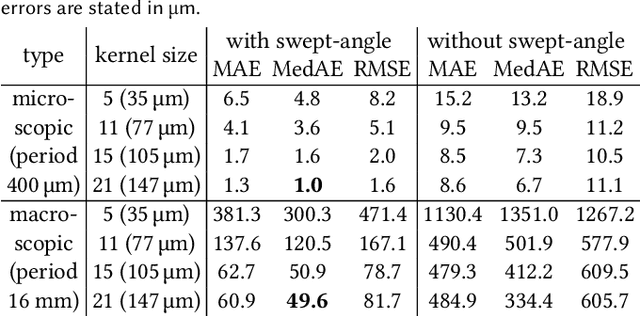
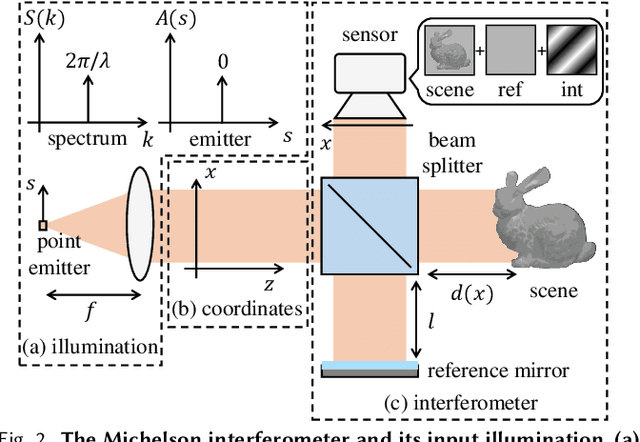
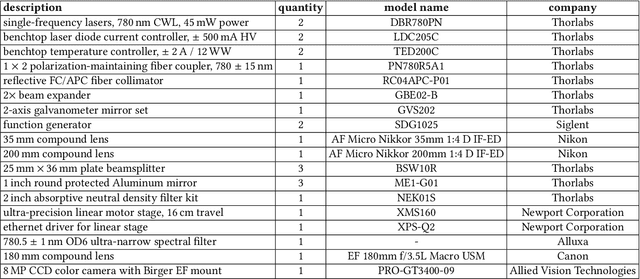
Abstract:We present a new imaging technique, swept-angle synthetic wavelength interferometry, for full-field micron-scale 3D sensing. As in conventional synthetic wavelength interferometry, our technique uses light consisting of two optical wavelengths, resulting in per-pixel interferometric measurements whose phase encodes scene depth. Our technique additionally uses a new type of light source that, by emulating spatially-incoherent illumination, makes interferometric measurements insensitive to global illumination effects that confound depth information. The resulting technique combines the speed of full-field interferometric setups with the robustness to global illumination of scanning interferometric setups. Overall, our technique can recover full-frame depth at a spatial and axial resolution of a few micrometers using as few as 16 measurements, resulting in fast acquisition at frame rates of 10 Hz. We build an experimental prototype and use it to demonstrate these capabilities, by scanning a variety of scenes that contain challenging light transport effects such as interreflections, subsurface scattering, and specularities. We validate the accuracy of our measurements by showing that they closely match reference measurements from a full-field optical coherence tomography system, despite being captured at orders of magnitude faster acquisition times and while operating under strong ambient light.
Optimizing Codes for Source Separation in Color Image Demosaicing and Compressive Video Recovery
Jul 11, 2017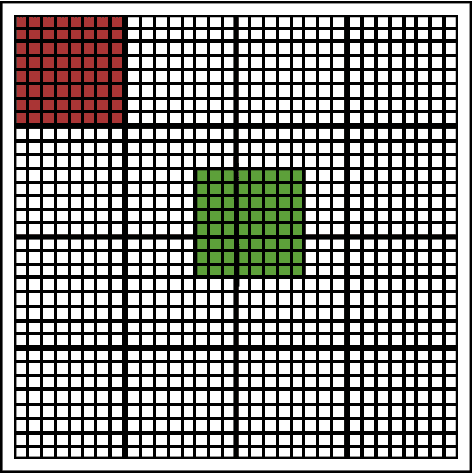
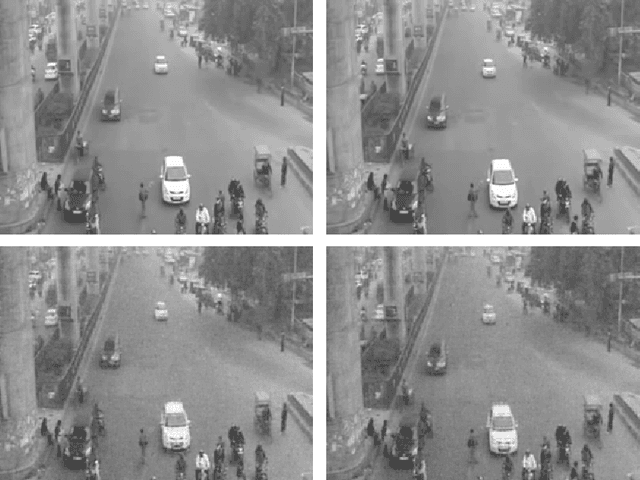
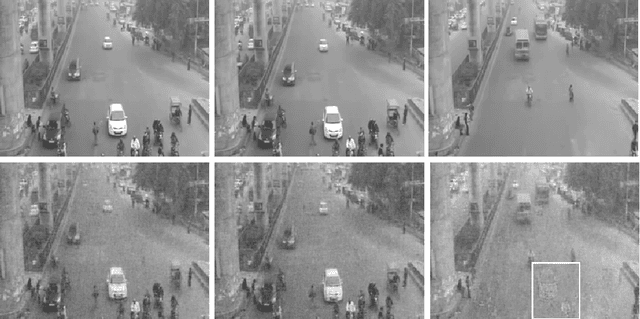
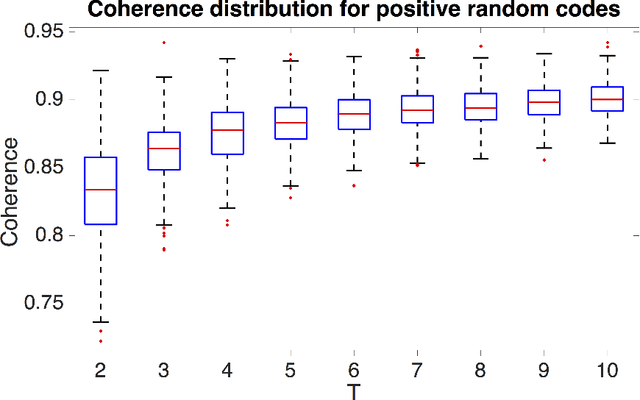
Abstract:There exist several applications in image processing (eg: video compressed sensing [Hitomi, Y. et al, "Video from a single coded exposure photograph using a learned overcomplete dictionary"] and color image demosaicing [Moghadam, A. A. et al, "Compressive Framework for Demosaicing of Natural Images"]) which require separation of constituent images given measurements in the form of a coded superposition of those images. Physically practical code patterns in these applications are non-negative, systematically structured, and do not always obey the nice incoherence properties of other patterns such as Gaussian codes, which can adversely affect reconstruction performance. The contribution of this paper is to design code patterns for video compressed sensing and demosaicing by minimizing the mutual coherence of the matrix $\boldsymbol{\Phi \Psi}$ where $\boldsymbol{\Phi}$ represents the sensing matrix created from the code, and $\boldsymbol{\Psi}$ is the signal representation matrix. Our main contribution is that we explicitly take into account the special structure of those code patterns as required by these applications: (1)~non-negativity, (2)~block-diagonal nature, and (3)~circular shifting. In particular, the last property enables for accurate and seamless patch-wise reconstruction for some important compressed sensing architectures.
 Add to Chrome
Add to Chrome Add to Firefox
Add to Firefox Add to Edge
Add to Edge